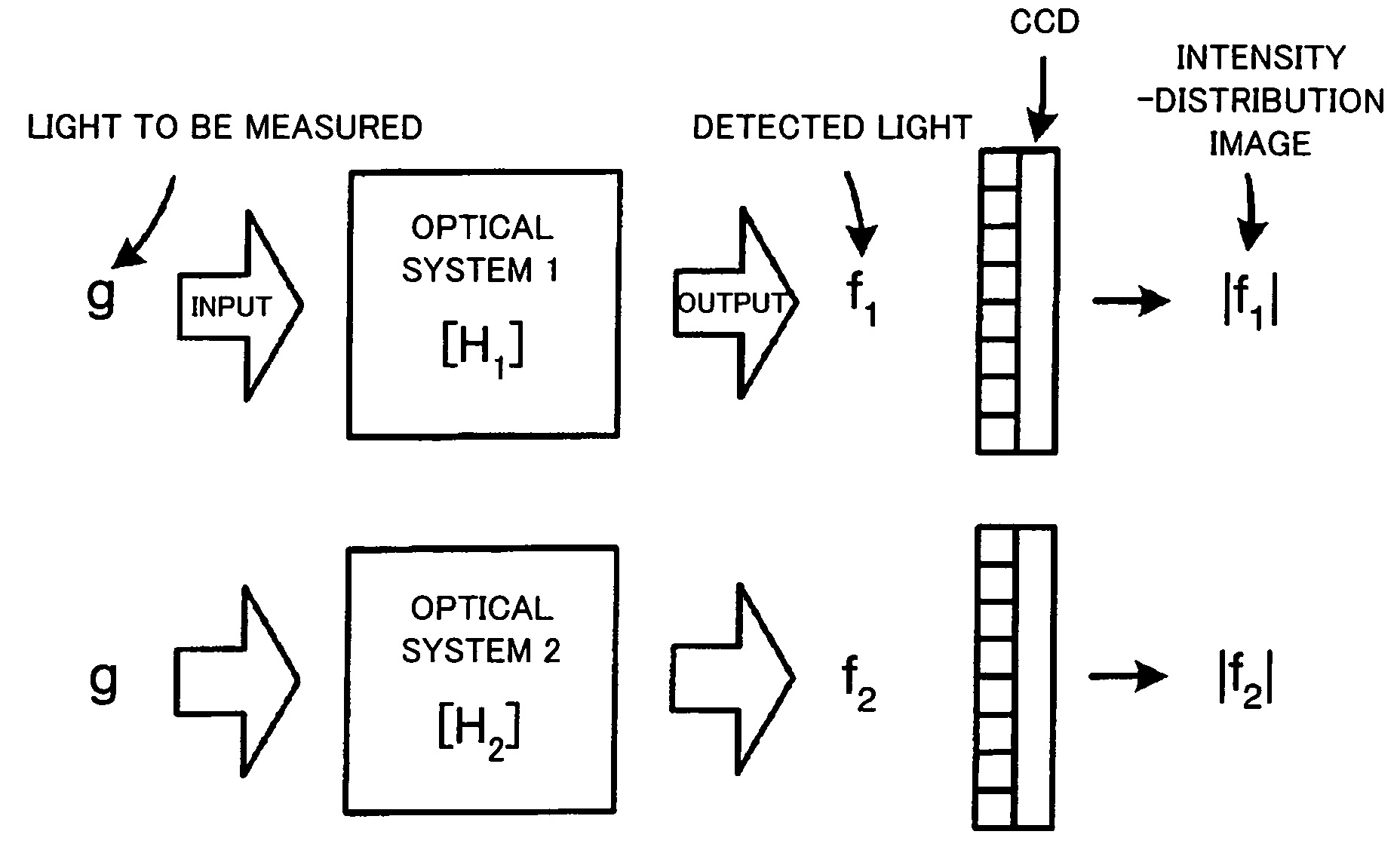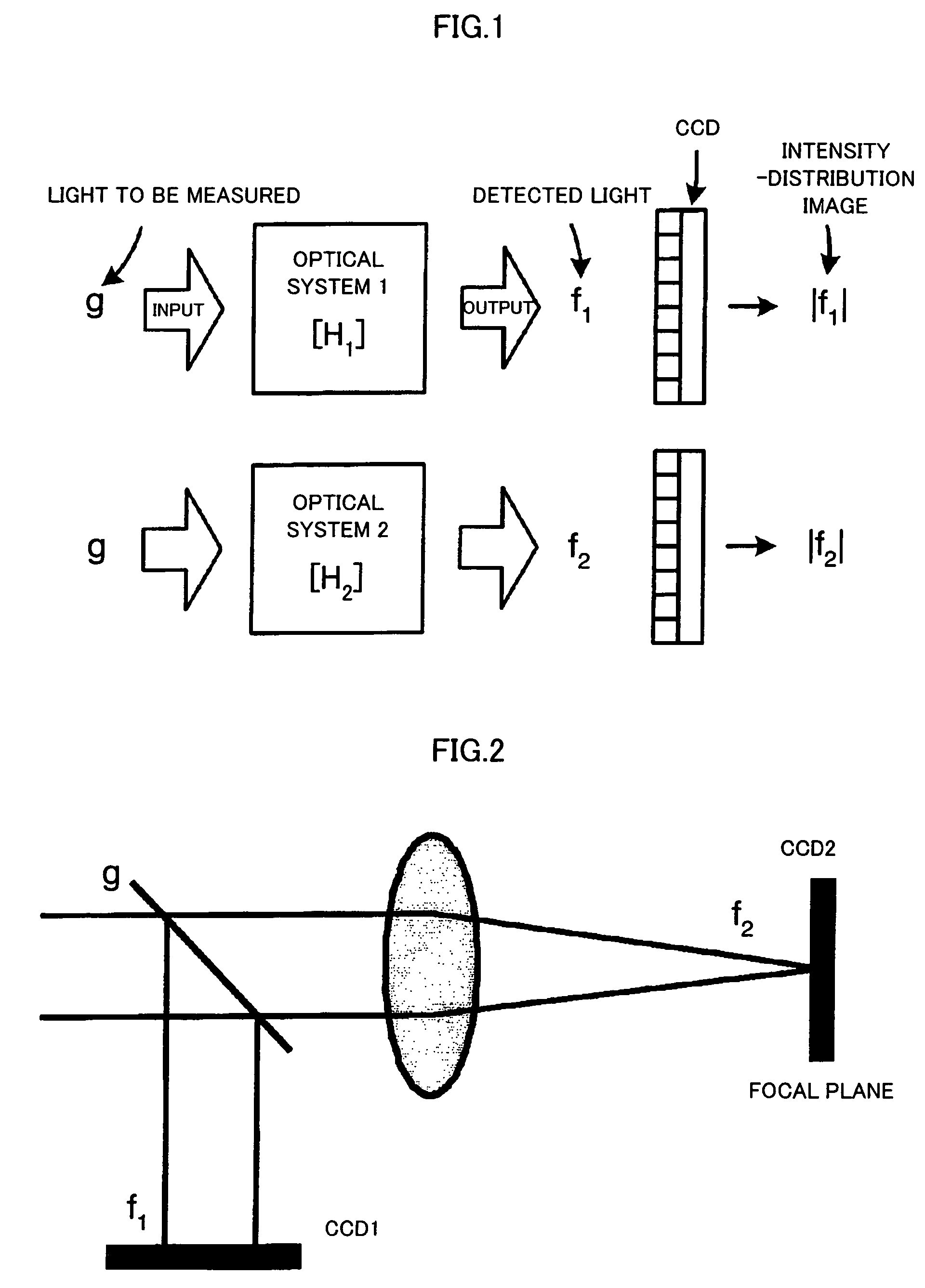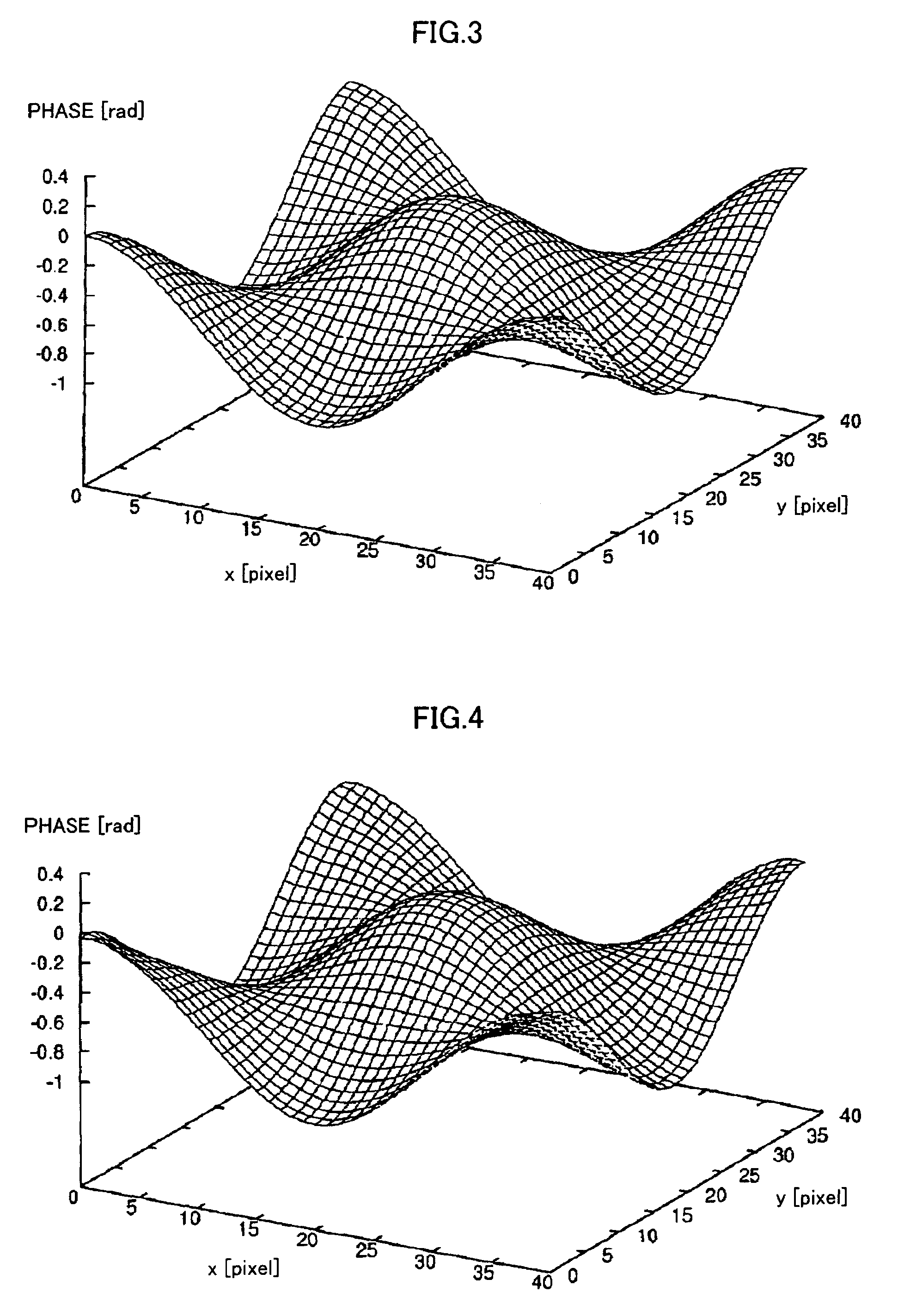Method for measuring optical-phase distribution
a technology of optical phase and distribution, applied in the direction of optical apparatus testing, optical radiation measurement, instruments, etc., can solve the problems of special measuring devices, high cost, and hardware such as interferometers and shack-hartman sensors, and achieve easy and economical measurement, high speed, and high accuracy.
- Summary
- Abstract
- Description
- Claims
- Application Information
AI Technical Summary
Benefits of technology
Problems solved by technology
Method used
Image
Examples
Embodiment Construction
[0037]Hereinafter, the best mode for carrying out the invention will be explained, referring to drawings.
Mathematical Expression of Light Wave and an Optical-phase-distribution Measuring System
[0038]First, the mathematical expression of a light wave used in the present invention will be explained.
[0039]It is assumed in the present invention that light which is an object for measuring phase-distribution (that is, light to be measured) is, a monochromatic light with a single wavelength component, and a time coherent light in which there is a fixed correlation between phases at any different time such as a laser beam.
[0040]In the present invention, the time vibrational term of a light wave u is separated for calculation in optics, and, complex amplitude v, the intensity a of a light wave and a phase θ of a light wave are expressed by the following Expression 1 (refer to the non-patent document 6).
u=aexp[i(θ−ωt)]=vexp(−iωt) [Expression 1]
[0041]where i represents an imaginary number, Ω...
PUM
| Property | Measurement | Unit |
|---|---|---|
| optical- | aaaaa | aaaaa |
| phase distribution | aaaaa | aaaaa |
| optical | aaaaa | aaaaa |
Abstract
Description
Claims
Application Information
 Login to View More
Login to View More - R&D
- Intellectual Property
- Life Sciences
- Materials
- Tech Scout
- Unparalleled Data Quality
- Higher Quality Content
- 60% Fewer Hallucinations
Browse by: Latest US Patents, China's latest patents, Technical Efficacy Thesaurus, Application Domain, Technology Topic, Popular Technical Reports.
© 2025 PatSnap. All rights reserved.Legal|Privacy policy|Modern Slavery Act Transparency Statement|Sitemap|About US| Contact US: help@patsnap.com



